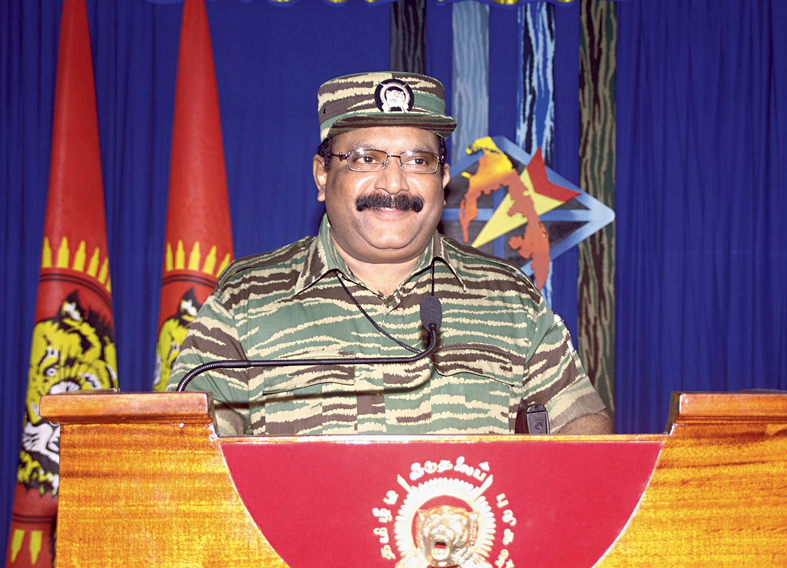
Why LTTE can never be revived

More than 13 years after it met an inglorious end, one thing can be said with certainty about the Liberation Tigers of Tamil Eelam (LTTE): the once-feared insurgent group can never come alive again.
Occasional arrests of people allegedly linked to the LTTE trigger speculation that attempts may be on to revive an outfit which then controlled a third of all land and two-thirds of the winding coastline in Sri Lanka.
Nothing can be farther from the truth.
Whatever opinion one may hold about the man whose identity was synonymous with the Tamil Tigers, Velupillai Prabhakaran slogged for years before the LTTE became a force potent enough to challenge Sri Lanka militarily.
From the time he fled his home in the early 1970s to 1976 when he founded the LTTE, Prabhakaran struggled against tremendous odds to collect followers and weapons.
The growth was slow, the dangers too many and the only way to escape frequently stepped up surveillance in Jaffna was to escape by boat to Tamil Nadu, separated from the island nation by a narrow strip of sea.
Also Read: Is ISI helping LTTE to make a comeback in South India? NIA thinks so
In 1982, when he was confined to Madurai in Tamil Nadu by a court after being arrested in Madras (now Chennai) following a shootout, Prabhakaran — who considered INA founder Subhas Chandra Bose a hero — confided to a friend that his heart’s desire was to see just 100 men march in battle fatigues.
Thanks to the horrific anti-Tamil riots that swept Sri Lanka in July 1983 and India’s decision to covertly arm and train Tamil militants, Prabhakaran’s dream turned into more than a reality.
The LTTE barely had 40 men and probably fewer than 25 weapons at the start of 1983, a watershed year in Sri Lanka. Within four years, Prabhakaran had wiped out almost all rival groups and taken on the mighty Indian Army.
Once the Indians withdrew after losing nearly 1,200 soldiers, the LTTE turned into a de facto state and also earned the terrorist tag by carrying out a string of assassinations of high-profile Tamil, Sri Lankan and Indian leaders.
It took Sri Lanka a whole of a blood-soaked quarter century to militarily crush the LTTE and wipe out its entire leadership, once thought to be invincible.
The slow and at times unsteady growth of the LTTE from 1976 to 1983 and its ballooning later occurred in certain historical circumstances.
These included mounting Sinhala-Buddhist chauvinism culminating in the 1983 pogrom, the resultant irrelevance of traditional Tamil politics, growing popular support to a nascent Tamil militancy and, most important, a sympathetic India and Tamil Nadu.
Also Read: Rajiv Gandhi killers set free; what did they do in 1991?
Also, one must not overlook that the single-minded devotion of Prabhakaran — however distasteful may have been many of his actions — to the cause of Tamil Eelam played a major role in the rise and rise of the LTTE.
Minus all these, there would have been no LTTE, even under the same Prabhakaran. All these factors are now history.
The decimation of the LTTE has been so complete and was accompanied by such horrendous cruelty that even a group a tenth of its strength cannot come up in the next half a century, if not longer.
The pro-LTTE diaspora spread across the world may still pay lip service to a dead cause but less than 5 per cent of them will ever want to return to Sri Lanka, much less indulge in an armed struggle.
As for their children born and raised on foreign soil, the less said the better.
Also Read: Jaffna library: 40 years on, memories of a violent past burn bright
Equally important, the Tamils who suffered at the hands of the LTTE – do not discount this factor – will never want to return to a world where the only certainty was death and destruction.
The LTTE – with combat forces, an intelligence wing, suicide squads, a lethal navy and an administrative structure – commanded thousands of fighters at the peak of its strength.
At the same time, an estimated 3,000 combatants had quit the group by 1991. Thousands followed suit in later years, settling down in distant countries. While many quietly assumed a low profile and embraced normal life, there will be any number who – devoid of education and work skills – may want to profit from crime.
In other words, there certainly will be LTTE remnants who may be ready for some mischief, but that should not be confused with its revival.
Also Read: 13 years too late: As ethnic fault lines blur, what it means for Sri Lankan Tamils
The LTTE died the day Prabhakaran was killed in May 2009. Even if God wishes, the group as it existed and thrived cannot be put together again. To think that a group of remnants can weave together another LTTE is a joke.
(The writer is a long-time Sri Lanka watcher who has authored three books on the ethnic conflict, including the only, albeit unauthorized, biography in English of Velupillai Prabhakaran)
(The Federal seeks to present views and opinions from all sides of the spectrum. The information, ideas or opinions in the articles are of the author and do not reflect the views of The Federal)


